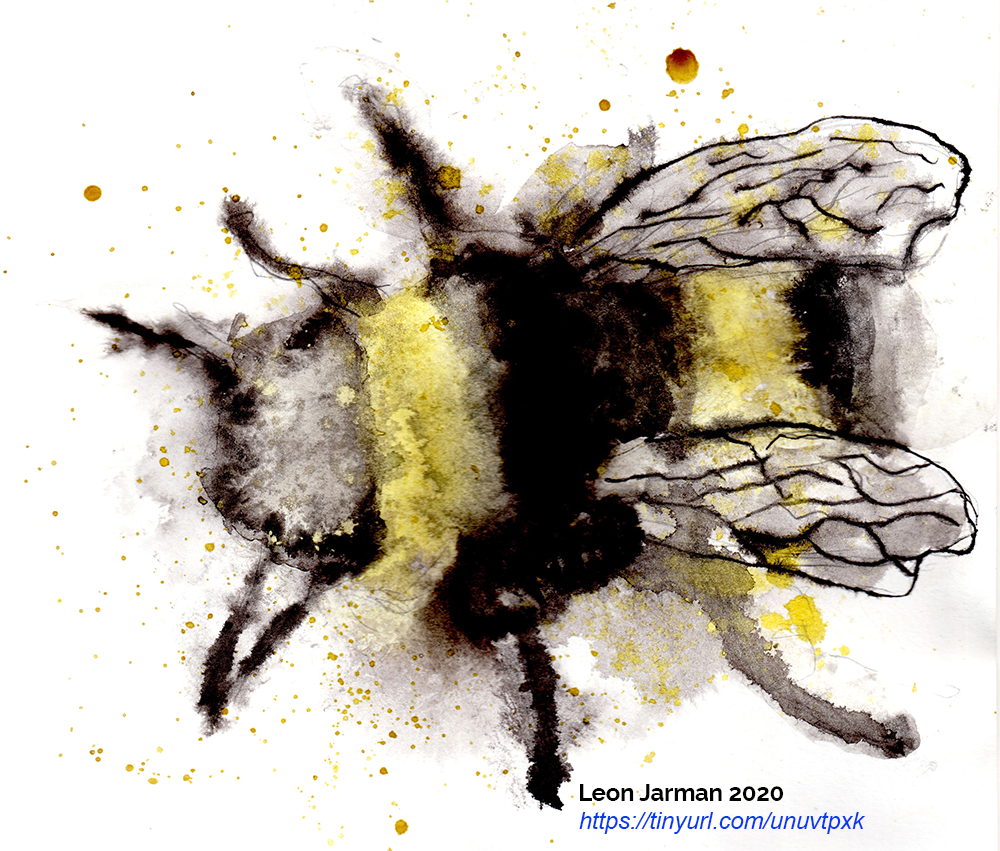
Release of full bee genome sequences creates a buzz
As we revealed in Liam Crowley’s blog yesterday, the Darwin Tree of Life (DToL) is pleased to announce that we have released full genome sequences for three of the bumblebee species found in Britain and Ireland, with more coming soon. The DToL project aims, ultimately, to sequence all the 70,000 species that make their homes here on and around these islands. We will release these data openly to build foundations for a new biology based on reference genome sequences – basic science, conservation, ecology, evolution, and biotechnology will benefit from our project.
Bumblebees are of particular interest and concern in our environment. DToL project lead Prof. Mark Blaxter says:
“Bumblebees are an iconic and important part of our ecosystems, and through their pollination services are essential to the productivity of agricultural crops. However bumblebee populations are threatened globally, and especially in temperate ecosystems. They are also fascinating organisms with social behaviour, complex immune systems, venoms of possible medical application, and many other features.
The Darwin Tree of Life Project is proud to have been able to sequence three bumblebees in the first set of species we are analysing, and we look forward to seeing how these new data will be used by conservationists, ecologists and biologists in understanding and conserving these beautiful animals”
We have already received a lot of positive feedback regarding the latest release from the wider community, who are keen to use these sequences in their research. DToL partners at the Earlham Institute said:
“The Earlham Institute is excited to be working alongside Oxford University and the Wellcome Sanger Institute on researching UK bumblebee species as part of the Darwin Tree of Life project. The groundbreaking work they have done to collect this core sample of UK bumblebee biodiversity, and to generate high quality genome sequences will further enable our ongoing work on bumblebee population biodiversity. We are studying the population structure and history of several of the species included in this release. The unprecedented quality and completeness of the genomes will allow us to ask these questions with an accuracy never thought to be possible before. As bumblebees play such an important role in our native pollinator assemblage, we are interested in understanding why some species are struggling in the UK countryside, whilst others are thriving. Our work will allow us to isolate parts of the genome that are particularly important to the health of contemporary populations, and hopefully this understanding can contribute to future conservation efforts to protect bumblebees across the UK.
The release of the first DToL bumble bee genomes also presents an amazing opportunity to understand the unique biology of our native bees. Our lead researcher, Dr Calum Raine, is asking questions about the relationship between the way bees determine their sex and the way they evolve. His work, described in an article here, will greatly benefit from the availability of the genome sequences of more UK bumblebees. Working in a field called comparative genomics, more genomes equals more explanatory power. This release will offer such an increase in power, and hopefully speed exciting insights into some of our most loved pollinators.”
Earlham Institute group leader Dr Wilfried Haerty echoed this sentiment, saying:
“We are extremely excited by the release of high quality bumblebee genomes by the DToL as it will allow a great step forward in our ongoing work investigating Bumblebee populations genetics and dynamics across the UK, and how their unique biology shapes the evolution of their genomes”
There has also been excitement from the Bumblebee Conservation Trust (BBCT), the UK charity whose aims are to enhance the understanding of bumblebee ecology and conservation, increase the quality and quantity of bumblebee habitat, and to inspire and enable a diverse range of people to take action for bumblebees. Dr Amy Plowman (Head of Conservation and Science at BBCT) said:
“We are really excited to see the first Bombus genomes added to the Darwin Tree of Life. Bumblebee researchers around the world will be able to use them to understand more about these wonderful species”.
To commemorate the release of these first bee genomes, we have collaborated with award-winning young artist Leon Jarman to distribute a print of his bumblebee painting to project partners. Leon, who donates a portion of his profits to the BBCT, says
“I painted the bumble bee in the summer of 2020 using coloured inks and water. I am a very big fan of bees and wasps so my friends and I started a Bee Society at school to help inform others about why we must look after our fluffy, flying friends and not be afraid of them. My painting won first prize in an art competition in August 2020 and because of all the positive comments about my painting and requests for prints I decided to make some to sell. I chose to donate 25% of all my profits to the Bumblebee Conservation Trust to help raise awareness and help protect them from dangers like harmful pesticides.
I am very grateful that my painting has been chosen for the bee section of the tree of life project.”

(If you would like a copy of his picture, they can be obtained from Leon’s Facebook page: Bee cooperative – Home)
